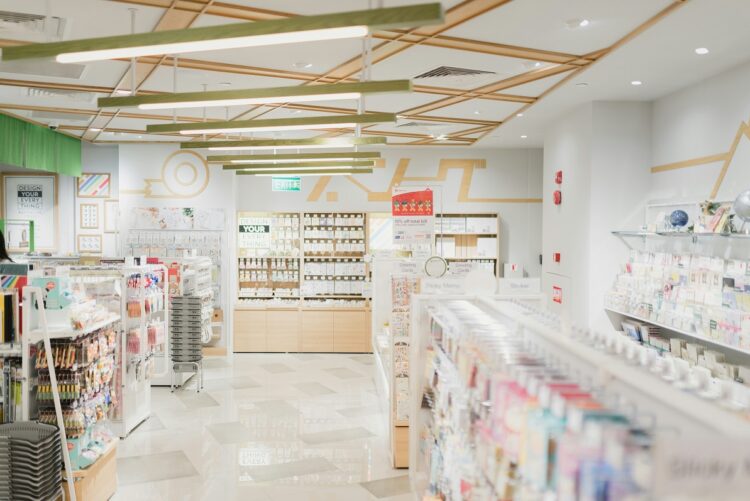Let’s be honest—pharmacies haven’t exactly been seen as tech trailblazers. For years, they were mainly seen as retail counters for prescriptions and cold meds. But things are changing fast. Today’s pharmacies are evolving into digital command centers for healthcare. With automation, data integration, and backend intelligence leading the charge, they’re becoming smarter, faster, and more involved in actual patient care.
And powering a lot of that behind-the-scenes transformation? PBM technology. It’s the digital nerve center that keeps modern prescription workflows running smoothly. Think of it as the infrastructure that lets pharmacies deliver the right medication at the right time—while also managing costs, coverage, and compliance in real time.
It’s Not Just About Dispensing Anymore
The traditional image of a pharmacist counting pills is quickly being replaced by something more advanced. Today’s pharmacy professionals are handling patient data, reviewing therapeutic plans, and even flagging health risks based on prescription trends. That’s only possible because of the systems running underneath—systems like PBM platforms that track usage, identify drug interactions, and automate prior authorizations.
When PBM technology is hooked into a pharmacy’s system, it creates this real-time stream of intelligence. Is a patient overdue for a refill? Did their insurance just stop covering their usual medication? Has a dangerous drug interaction popped up in their profile? All of that can be flagged and handled on the spot. This is no longer just reactive care—it’s proactive healthcare management happening at the pharmacy counter.
Tech Is Turning Pharmacies into Remote Care Hubs
Here’s something that would’ve sounded futuristic just a few years ago: getting expert medication counseling through a mobile app, from your pharmacist, without ever setting foot in the store. But that’s the new normal. With telehealth tools, chat systems, and digital scheduling platforms, pharmacies are now operating more like remote care hubs.
What ties this all together is solid backend support. Without tech like PBM systems syncing benefits in real time, it would be a nightmare trying to verify coverage or authorize changes on a video call. But now, pharmacists can review a patient’s entire medication history, check benefit eligibility, and suggest alternatives—all during a quick teleconsultation. It’s sleek, it’s efficient, and it’s the kind of thing that’s redefining what we expect from our local drugstore.
Connecting the Dots with Interoperability
Modern pharmacies don’t operate in a vacuum. They’re part of a bigger, tech-driven healthcare puzzle. That means the software they use has to talk to insurance platforms, hospital systems, lab databases, and electronic health records. Without that interoperability, everything slows down—or worse, falls apart.
This is where PBM tech plays another vital role. It doesn’t just help with claims or coverage—it integrates with other platforms, syncing critical data points across systems. So when a patient gets discharged from a hospital, for example, the pharmacy knows what meds they’ve been prescribed and what changes were made to their treatment plan. That’s a game-changer for continuity of care.
Value-Based Care Needs Pharmacies in the Loop
As healthcare shifts toward value-based models—where providers are rewarded for outcomes, not volume—pharmacies are stepping up. They’re tracking patient engagement, managing chronic conditions, and contributing to risk-based contracts. But they can’t do it alone.
PBM platforms provide the metrics that matter. They show which patients are improving, which therapies are working, and where adjustments might save money or improve safety. Pharmacies now have the data they need to prove their value in the bigger healthcare equation—and that’s helping them become strategic partners, not just service providers.
Looking Ahead: AI, Personalization, and Beyond
So what’s next? Expect more AI. Expect more automation. Expect personalized care plans that aren’t just based on symptoms, but on lifestyle data, genomic insights, and behavior tracking. All of this is going to lean heavily on tech that can process and deliver insights in real time—and PBM systems will be at the center of that ecosystem.
We’re heading into an era where pharmacies won’t just be filling prescriptions—they’ll be optimizing therapy. They’ll be adjusting medications based on AI suggestions. They’ll be monitoring patients remotely and intervening early. And yes, they’ll be doing it with tech that’s built to scale, adapt, and respond instantly.
Final Thoughts
The pharmacy of the future is already here. It’s connected. It’s data-driven. It’s capable of much more than just dispensing pills. With platforms like PBM technology quietly working in the background, pharmacies are becoming active players in clinical care, digital health strategy, and patient outcomes. And as the tech keeps evolving, so will the role of the pharmacy—making it one of the most exciting frontiers in modern healthcare.



